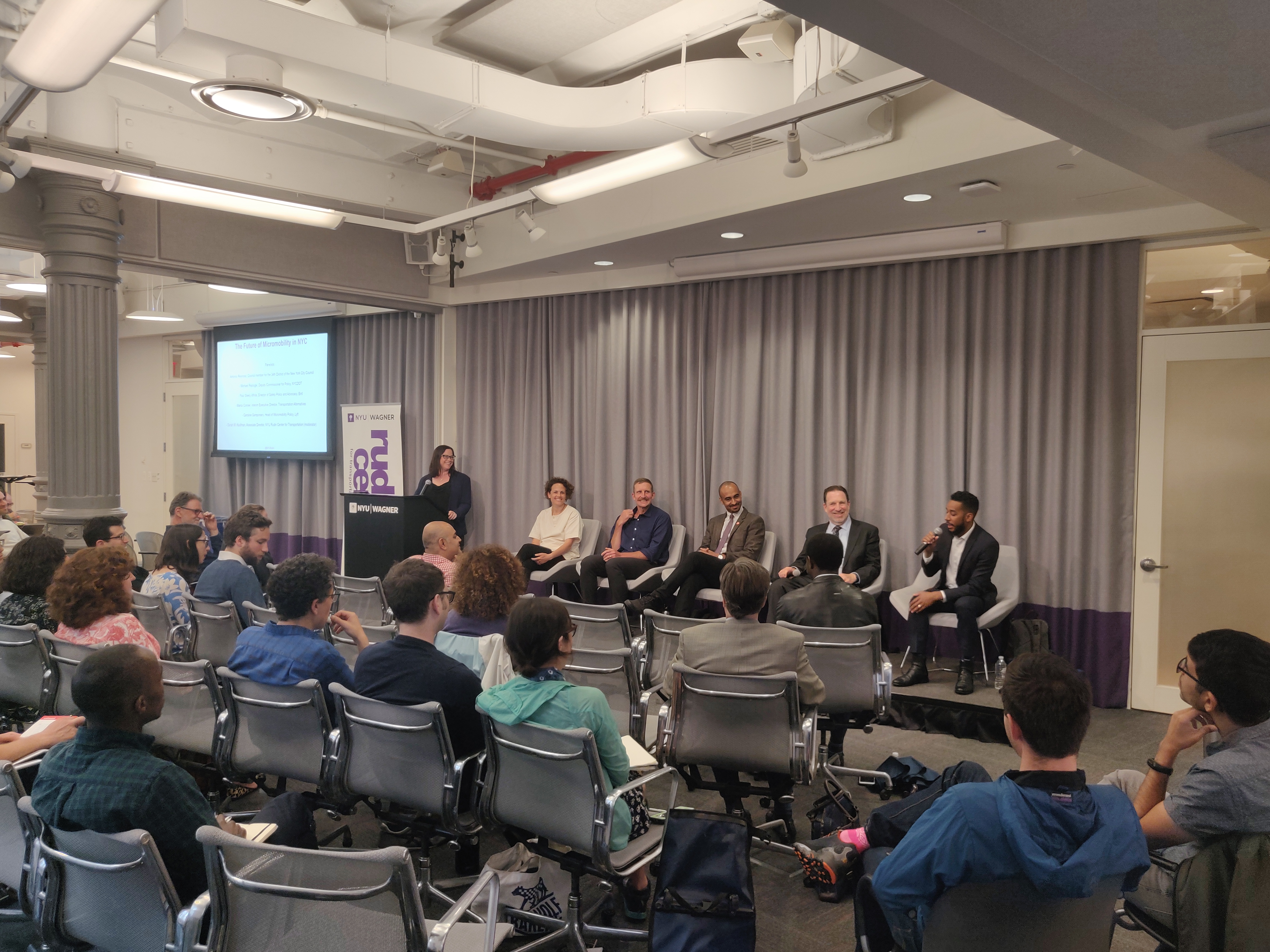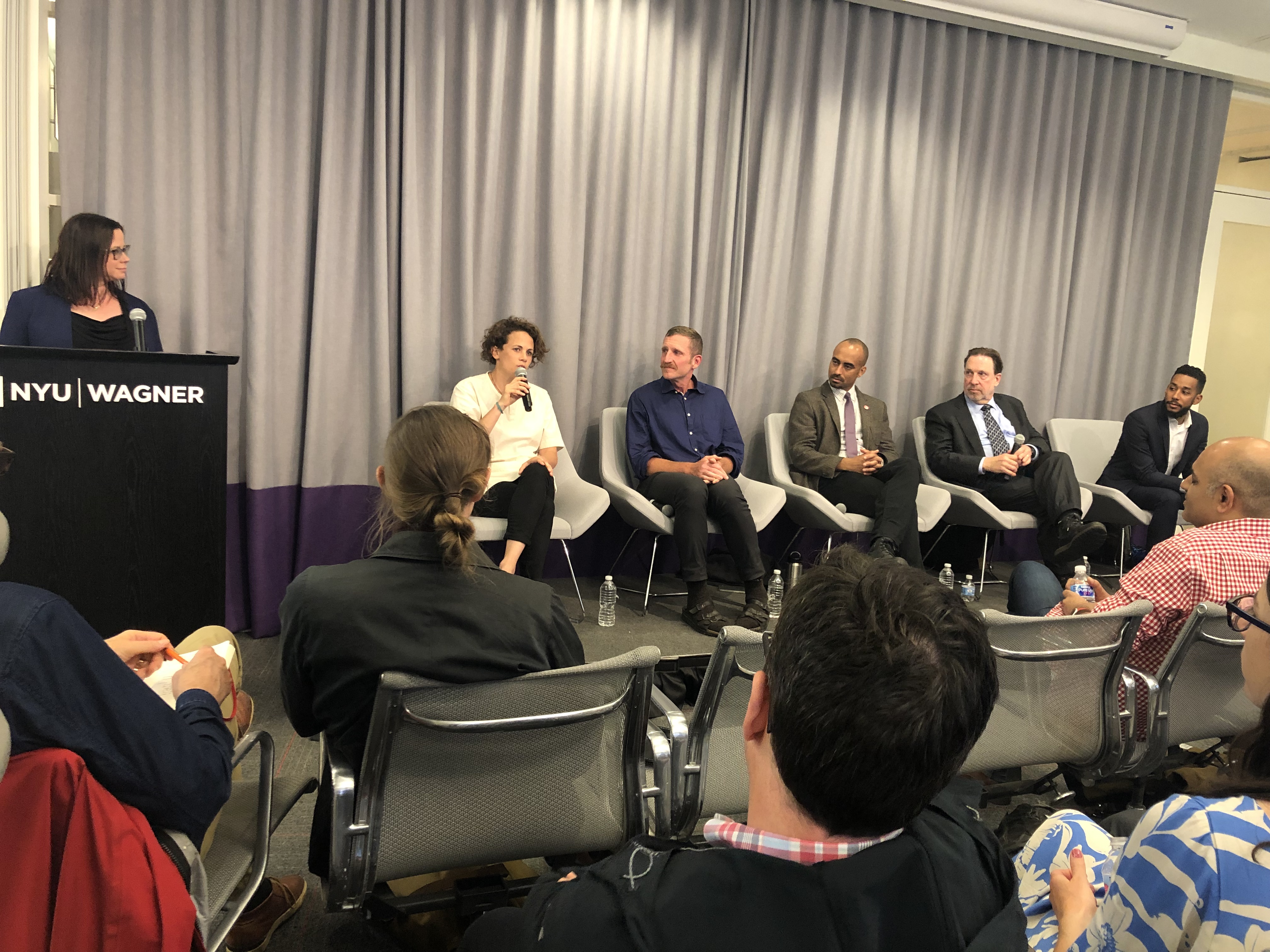Event Recap: The Future of Micromobility in NYC
Shared bicycle and electric scooter services have expanded in cities across the world. Data from tens of millions of trips indicate that shared e-scooters are replacing a large share of short car trips. Meanwhile, Citi Bike, which recently celebrated its 60 millionth trip, has grown in popularity, often as a solution for first and last mile trips.
At the NYU Rudin Center for Transportation on June 10th, a distinguished panel considered the future of micromobility in New York City. The panelists who discussed the benefits and challenges of e-scooters and e-bikes to the City's streets, sidewalks and population were:
- Antonio Reynoso, Council member for the 34th District of the New York City Council
- Michael Replogle, Deputy Commissioner for Policy, NYCDOT
- Paul Steely White, Director of Safety Policy and Advocacy, Bird
- Marco Conner, Interim Executive Director, Transportation Alternatives
- Caroline Samponaro, Head of Micromobility Policy, Lyft
- Sarah M. Kaufman, Associate Director, NYU Rudin Center for Transportation (moderator)
Major takeaways from the night's discussion were:
- The relationship between e-scooters and e-bikes: Council Member Reynoso stated that we need to leverage the energy behind e-scooters and bring that to e-bikes, which are primarily used by delivery workers, and do not see the same level of advocacy. "We won't do one without the other."
- E-bikes are already here, and are policed unevenly: 30,000 e-bikes are already used by delivery workers in New York City. Marco Conner called e-bike confiscation "the receration of stop-and-frisk," noting: 7% of native English-speaking e-bike users have had their bikes confiscated, compared to 50% of Chinese-speaking e-bike users. (citing research by Dr. Do Lee [pdf])
- Safety of e-bikes and e-scooters depends on street infrastructure: Panelists agreed that safety of e-scooters and e-bikes are comparable to that of other modes, but the safe street space is not yet allotted for their operation. On ensuring rider safety and careful usage, it is likely that people would not ride scooters or bikes on sidewalks if they felt safe enough to ride on the streets. Panelists agreed that safe and protected infrastructure is essential for true use of micromobility.
- Street space must be re-considered: Panelists agreed that street space should be adequately apportioned to active modes, including designated parking for shared modes to avoid sidewalk clutter. The transition of some space for parking personal cars to more dynamic uses, including delivery trucks, dropoff/pickup for rideshare and parking shared modes, would help to organize the new modes and move the city toward more dynamic streetscape uses.
- Strong leadership is key: Several members of the panel commented that strong leadership is needed to move New York City away from car culture, towards more dynamic modes, and reform the process by which infrastructure is placed.


Video from the event will be posted in the near future.